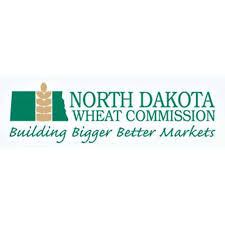
FARGO, N.D. – (Oct. 22, 2019) – The North Dakota Wheat Commission recently released the results of its
annual crop quality reports. The organization has been conducting harvest surveys for more than 60
years, and the data gathered is used for publishing regional reports and the U.S. Wheat Associates
overall report which covers all six classes of wheat produced in the nation. The data is also used in
overseas and domestic marketing seminars and outreach with customers. The annual harvest survey
represents hard red spring wheat produced in North Dakota, Montana, Minnesota, South Dakota and
the Pacific Northwest, and durum produced in North Dakota and Montana.
During harvest, state wheat check-off groups contract with the National Ag Statistics Service
to collect nearly 900 hard red spring wheat and durum samples and ships them to North Dakota
State University to be analyzed for kernel quality and end-use properties. Samples are combined
according to specific regions and protein levels, and the combined samples (composites) are milled into
semolina or flour, and analyzed for bread and pasta qualities. NDWC Policy and Marketing Director Jim
Peterson says this fall’s inclement weather has challenged producers and strained the optimum
collection goals for the surveys. “This fall has been the most challenging collection period in recent
memory,” he said. “We have goals of how many samples we want to collect each week. With the
weather, getting predictable, steady samples was difficult, but we’re confident the survey is a fair representa-
tion of what will make it to the commercial market.”
Peterson says getting accurate results is important since customers that buy North Dakota wheat rely on
the data from the surveys to determine purchasing strategies for the following year. “Our job is to
represent the crop to help optimize the strengths our wheat has over competitors and help our
customers manage year-to-year changes in end-use performance,” he said. “We don’t try to
hide things, and customers really find value in our surveys because they trust they’re the most accurate
representation of the crop. This year’s crop was diverse and extreme in some issues, so our data will be
vital to customers that need to adjust their strategies to accommodate for variances in crop quality.”
The NDWC’s crop quality reports for hard red spring wheat and durum are available at https://ndwheat.com/publications/cropqualityreports/.
